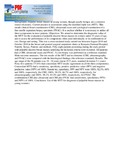| dc.description.abstract | Background. Palpable breast masses in young women, though usually benign, are a common source of anxiety. Current practice is assessment using the modified triple test (MTT). This entails clinical breast examination (CBE), ultrasound scans and cytological examination of a fine-needle aspiration biopsy specimen (FNAC). It is unclear whether it is necessary to utilise all three components in most patients. Objectives. We aimed to determine the diagnostic value of the MTT for the evaluation of palpable discrete breast masses in women under 35 years of age, and to assess the performance of its components when used individually or in combinations of two. Design and setting. This was a cross-sectional study carried out between August 2010 and October 2010 in the breast and general surgical outpatient clinics at Kenyatta National Hospital, Nairobi, Kenya. Patients and methods. Fifty-eight patients presenting during the study period with palpable discrete breast masses satisfying the inclusion criteria were recruited. All patients had a CBE, ultrasound scans and FNAC. A core biopsy was performed as a reference standard. Main outcome measures. The test results of the MTT and its elements (CBE, ultrasonography and FNAC) were compared with the histological findings (the reference standard). Results. The age range of the 58 patients was 18 - 34 years (mean 25.5 years, standard deviation 5.1 years). Forty-five patients (77.6%) had concordant MTT results (agreement in all the three components). Concordant MTTs had a sensitivity, specificity, positive predictive value (PPV) and negative predictive value (NPV) of 100%. Sensitivity, specificity, PPV and NPV were 100%, 92.3%, 60% and 100%, respectively, for CBE; 100%, 94.2%, 66.7% and 100%, respectively, for ultrasonography; and 100%, 98.1%, 83.3% and 100%, respectively, for FNAC. The combinations CBE plus ultrasound and CBE plus FNAC had sensitivities, specificities, PPVs and NPVs of 100%. Conclusion. Use of the MTT for diagnosis of palpable breast masses in young women ( | en |

